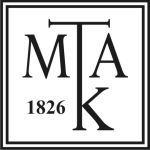The Beginnings of the Secularisation of Marriage in Poland
The Introduction of Civil Marriages and Divorces in Cracow (1810–1818)
DOI:
https://doi.org/10.15170/Dike.2023.07.02.06Keywords:
civil marriage, divorce, Napoleonic Code, Duchy of Warsaw, Free City of CracowAbstract
The incorporation, under the Treaty of Tilsit of 1807, of part of the Polish lands of the Prussian partition into the Grand Empire of Napoleon as the Duchy of Warsaw, opened the way to the implementation of the post-revolutionary provisions of marriage law of the Napoleonic Code in Poland. In 1810, this code was introduced in the lands of the Austrian partition annexed to the Duchy of Warsaw, with its centre in Cracow. The French secular model of marriage, although contradictory to the centuries-old Polish legal culture and the Catholic religion professed by the vast majority of the city’s inhabitants, was nevertheless accepted by the political and legal elites of the time. Not only did it survive the fall of Napoleon, but under the autonomy of the Free City of Cracow it was maintained in 1818 and functioned until 1852, i.e. until the Austrians restored their mixed marriage model regulated by the Abgb.










